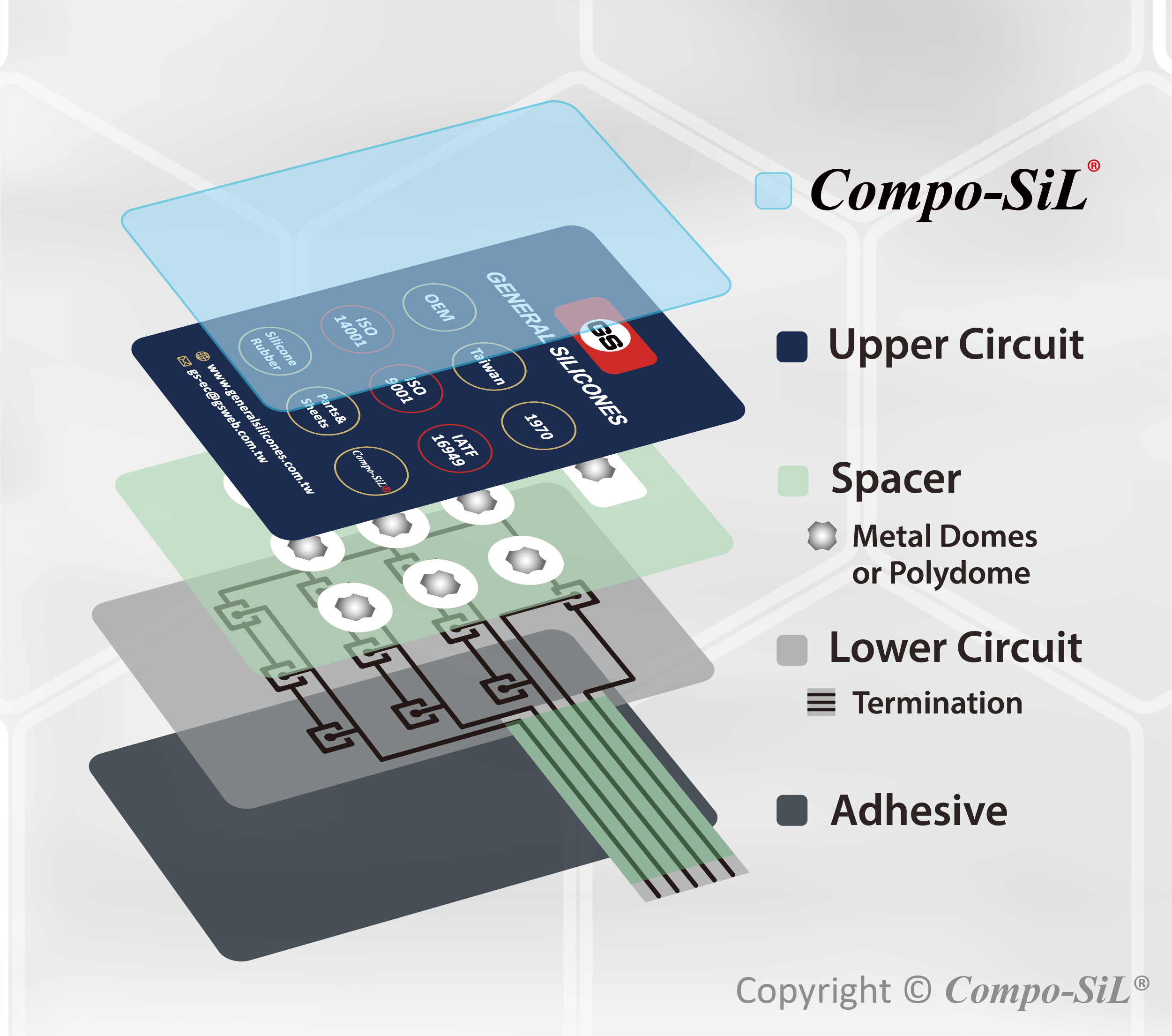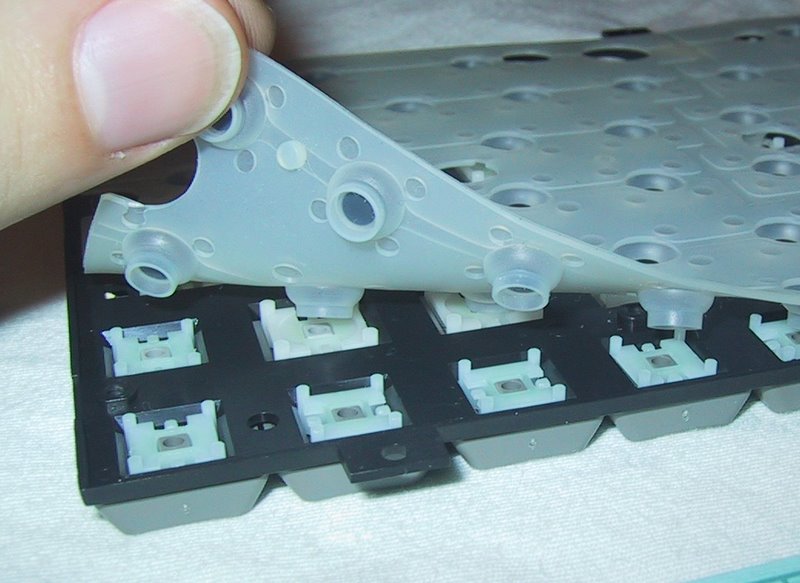Membrane Switches vs. Traditional Switches: What You Need to Know
Membrane Switches vs. Traditional Switches: What You Need to Know
Blog Article
Recognizing the Value of Membrane Switches in User Interfaces
Membrane buttons are important components in the layout of effective interface, facilitating not only functionality yet also boosting aesthetic allure and user communication. Their special features, such as resistance to adjustable layouts and environmental aspects, make them suitable for a varied array of applications across numerous industries. As we check out the future fads and different benefits related to Membrane innovation, it ends up being clear that these buttons are greater than simply parts; they represent a merging of advancement and usefulness. The effects of this technology on individual experience deserve examining additionally.
What Are Membrane Switches?

The spacer layer, which consists of adhesive residential properties, permits the splitting up of the circuit layer from the overlay, making sure that the button remains in a non-activated state till pushed. When stress is put on the overlay, it presses the spacer layer, connecting the void and finishing the circuit in the underlying layer. This layout not only decreases the physical area required for traditional mechanical buttons but likewise improves the toughness of the gadget, as Membrane buttons are usually resistant to dirt, dampness, and various other environmental variables.
Typically located in applications ranging from customer electronics to medical tools, Membrane switches are indispensable to modern technology, giving a reliable and user-friendly user interface that aligns with modern layout needs.
Benefits of Membrane Buttons
While many switch technologies exist, Membrane Switches deal unique benefits that make them particularly desirable in numerous applications. Among the primary advantages of Membrane buttons is their compact style, which permits for space-saving implementations in gadgets where property is limited. Their thin account not just improves visual appeal but likewise facilitates lightweight building and construction.
Another considerable benefit is their resistance to ecological factors. Membrane switches are typically sealed versus wetness, dust, and pollutants, making them perfect for use sought after settings, such as medical gadgets and commercial devices. This durability prolongs the life expectancy of the switch, lowering upkeep prices and enhancing reliability.
Furthermore, Membrane buttons can be customized to meet particular design requirements, integrating distinct graphics and colors that improve individual interaction. Their responsive responses options can also be tailored to supply an enjoyable customer experience. In addition, Membrane switches are affordable, especially in high-volume applications, as they can be created effectively.
Applications in Various Industries

In the consumer electronic devices market, Membrane buttons prevail in tools such as microwaves, washing machines, and push-button controls. Their tactile responses and aesthetic alternatives enhance customer experience while offering a streamlined, contemporary appearance. Furthermore, auto makers utilize Membrane buttons in dashboard controls and infomercial systems, where space is restricted, and user interaction is critical.
Additionally, the commercial industry leverages Membrane switches in control panels for machinery and tools, allowing for user-friendly procedure in typically rough environments. Their resistance to chemicals and wetness ensures durability and integrity in these applications. about his Overall, the versatility of Membrane Switches contributes substantially to their prevalent use, making them vital in numerous technological domains.
Style Considerations for Membrane Switches

When designing Membrane switches, several essential factors to consider need to be thought about to ensure optimal performance and customer experience. The choice of products is important; picking resilient, top notch substrates can boost the button's longevity and resistance to environmental elements such as wetness and temperature level variations.
Second of all, the design of the graphic overlay must focus on quality and simplicity of usage. Icons and message must be understandable, and the design must assist in intuitive communication (membrane switches). Furthermore, responsive responses is important; including a responsive dome or various other devices can improve the individual experience by supplying physical confirmation of activation
Another essential element is the switch's electric efficiency. Developers need to ensure that the conductive traces are appropriately made to lessen resistance and avoid signal interference. This involves examining the required actuation force and making certain compatibility with the digital parts they will interface with.

Future Patterns in Membrane Innovation
As technology continues to breakthrough, Membrane buttons are positioned to advance significantly, driven by innovations in products and making techniques. One emerging fad is the incorporation of sophisticated materials, such as versatile substratums and conductive inks, which enhance longevity and reduce the general weight of Membrane buttons. These products not just boost the tactile feedback but also allow for the design of buttons that can withstand harsher environmental problems.
In addition, the integration of touch-sensitive technologies is transforming conventional Membrane Switches right into even more interactive customer interfaces. Capacitive touch sensing units installed within Membrane button panels can provide a more user-friendly and responsive individual experience, lining up with the expanding demand for smooth, contemporary styles in customer electronics.
Furthermore, improvements in printing methods, such as electronic and 3D printing, allow fast prototyping and personalization of Membrane switches. This flexibility allows manufacturers to respond quicker to market needs and customer choices.
Finally, sustainability is ending up being a considerable focus, with producers exploring environmentally friendly materials and procedures. As these fads unravel, the future of Membrane technology assures boosted performance, aesthetic allure, and ecological obligation, solidifying their duty in innovative individual interfaces across numerous sectors.
Verdict
In verdict, Membrane Switches stand for an important part in the layout of user interfaces, incorporating functionality with aesthetic adaptability. As innovations in technology continue, the advancement of Membrane switches is anticipated to more refine individual interfaces, driving technology and improving functionality in a significantly complex technical landscape.
Membrane switches are important parts in the design of efficient individual interfaces, promoting not only functionality however likewise boosting visual appeal and user interaction.Membrane Switches serve as a crucial part in numerous user interfaces, helping with a seamless interaction between individuals and digital gadgets.While many button modern technologies exist, Membrane Switches offer unique advantages that make them his response especially desirable in different applications.Additionally, Membrane switches can be personalized to satisfy certain style demands, integrating special graphics and colors that enhance user interaction.In conclusion, Membrane Switches stand for a crucial element in the style of user interfaces, combining functionality with visual adaptability.
Report this page